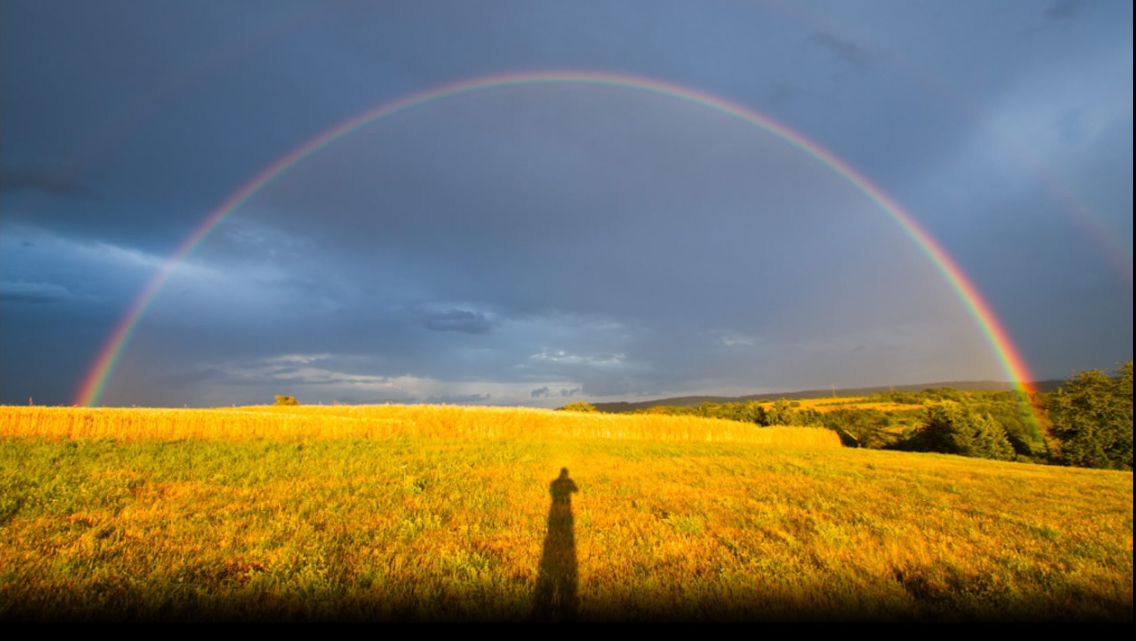3rd order rainbow - OPOD
The Enigmatic 3rd Order Rainbow
Rainbows are a captivating phenomenon that never fail to inspire awe and wonder. Most of us are familiar with the primary and secondary rainbows, but did you know that there is a third order rainbow as well? The third order rainbow, also known as the tertiary rainbow, is a rare and elusive sight that is centered on the sun itself. In this article, we will delve into the intricacies of the third order rainbow, exploring its formation, appearance, and the challenges involved in capturing it on camera.
Formation of the Third Order Rainbow
To understand how the third order rainbow forms, we must first grasp the basics of rainbow formation. The primary rainbow is created by rays of sunlight that are reflected once inside raindrops. The secondary rainbow, on the other hand, is formed by rays that undergo two internal reflections within the raindrops. Both the primary and secondary rainbows are located opposite the sun in the sky.
Unlike the primary and secondary rainbows, which result from internal reflections, the third order rainbow originates from rays of sunlight that pass through raindrops without reflection. These rays emerge at grazing angles, entering the raindrops closer to the rim. Due to this unique trajectory, the colors in the third order rainbow are dispersed more strongly than in the primary and secondary rainbows, causing it to appear wider and fainter.
The Elusive Nature of the Third Order Rainbow
Spotting a third order rainbow can be an incredibly challenging task. Not only is it faint and broad, but it is also situated in the glow of rays that pass through raindrops without reflection. Additionally, the glare of the sun itself further obscures its visibility. These factors make capturing a clear image of the third order rainbow a feat that requires great skill, experience, and perseverance.
The Work of Michael Großmann
One individual who has managed to capture the enigmatic third order rainbow on camera is Michael Großmann. In May 2011, he became the first person to successfully photograph the third order bow. Since then, he has continued his pursuit of this elusive phenomenon and has produced stunning images that showcase the beauty of the tertiary rainbow.
On June 29th, 2014, Großmann once again accomplished the remarkable feat of capturing the third order rainbow. In his composite image, the bow has been unsharp masked to enhance its visibility. This technique allows us to appreciate the intricate details and vibrant colors of the tertiary rainbow, which would otherwise be challenging to discern.
Observing the Primary and Secondary Bows
While Großmann's focus has primarily been on capturing the third order rainbow, he has also managed to photograph the more familiar primary and secondary rainbows. By looking in the opposite direction, away from the sun, he has successfully captured these vibrant arcs of color. In one of his images, the shadow of his camera can be seen at the center of the bows, adding a unique perspective to the composition.
Conclusion
The third order rainbow is a remarkable natural phenomenon that adds an extra layer of complexity to the already captivating world of atmospheric optics. Its formation, appearance, and elusiveness make it a challenging subject to study and capture on camera. Thanks to the dedication and skill of individuals like Michael Großmann, we are able to appreciate the ethereal beauty of the third order rainbow and gain a deeper understanding of the intricacies of our natural world. So, keep your eyes peeled and your camera ready, for you never know when you might catch a glimpse of this elusive marvel in the sky.

3rd Order Rainbow! ~ The rainbow fragment at left looks like an ordinary bow - much too wide though. It isn't. The camera is looking towards the sun which is hidden by cloud. This is the long sought 3rd order bow first captured in May, 2011 by Michael Gro�mann. Here Michael has done it again. He imaged this bow on 29th June '14. The picture is a composite where the bow has been unsharp masked to enhance its visibility. It looks an 'easy' picture to obtain - far from it, it took great experience and perseverence. All images ©Michael Gro�mann, shown with permission

The familiar primary rainbow is formed by rays reflected once inside raindrops. The outer secondary bow from two reflections. Both are opposite the sun.
The tertiary bow is instead centred on the sun itself. It is broad, faint and very hard to see in the glow of rays that pass through raindrops without reflection not to mention the glare of the sun itself.
Rays of higher and higher order bows enter raindrops closer and closer to the rim and at grazing angles. The colours are dispersed more strongly and the higher order bows get wider and wider.
Looking in the opposite direction - away from the sun - Michael Großmann has captured the "ordinary" primary and secondary bows.
The shadow of his camera is at the bows' centre.

Note: this article has been automatically converted from the old site and may not appear as intended. You can find the original article here.
Reference Atmospheric Optics
If you use any of the definitions, information, or data presented on Atmospheric Optics, please copy the link or reference below to properly credit us as the reference source. Thank you!
-
<a href="https://atoptics.co.uk/blog/3rd-order-rainbow-opod/">3rd order rainbow - OPOD</a>
-
"3rd order rainbow - OPOD". Atmospheric Optics. Accessed on November 16, 2024. https://atoptics.co.uk/blog/3rd-order-rainbow-opod/.
-
"3rd order rainbow - OPOD". Atmospheric Optics, https://atoptics.co.uk/blog/3rd-order-rainbow-opod/. Accessed 16 November, 2024
-
3rd order rainbow - OPOD. Atmospheric Optics. Retrieved from https://atoptics.co.uk/blog/3rd-order-rainbow-opod/.